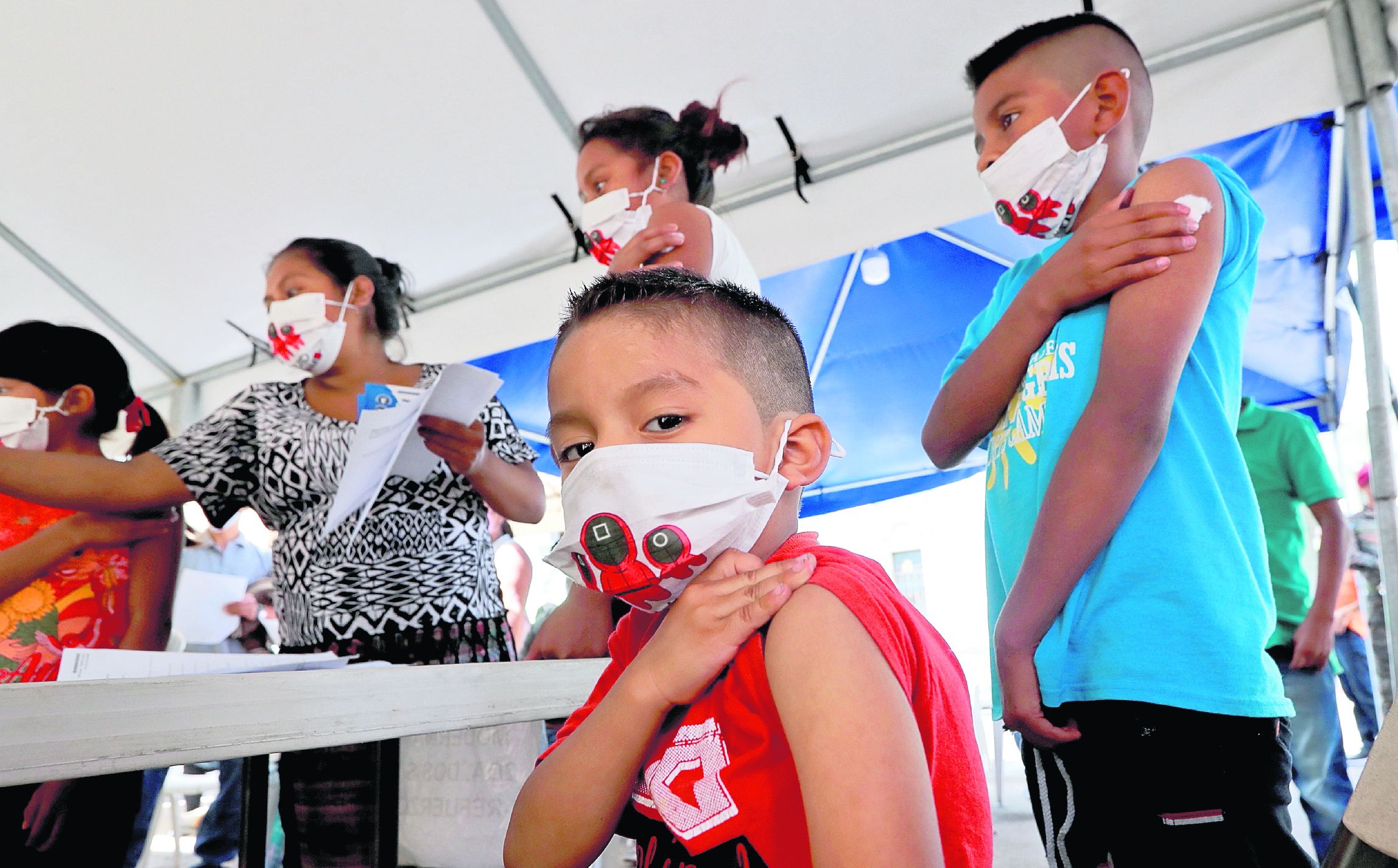Vaccination against covid-19 in children began 35 days ago, with the intention of inoculating 2.2 million Guatemalans between the ages of 6 and 11. According to the board of the Covid Situation in Guatemala in the count as of April 11 only it was possible to vaccinate 20.3 percent of this population, when the intention was to reach as many as possible for a safe return to face-to-face classes.
In total, 449 thousand 100 children were inoculated; Taking into account that minors were only given half the dose that an adult receives (0.25 ml), 224,500 doses were used to cover this group.
–
In a supervision of the National Center for Biologicals on March 31, it was found that there were one million 619 thousand 190 doses of Moderna stored that would begin to expire, the last batch expired on April 7. These vaccines were the only option in the country to protect children against covid-19, since the acquisition of pediatric Pfizer looks distant.
Information provided to Deputy Evelyn Moratalla reveals that by April 8, one million 526 thousand 530 doses remained in the center. It follows, then, that in one week 92 thousand 960 doses were distributed to the different health areas that were about to expire. To date it is not certain if they were used.
Without a biological to continue vaccinating the child population, Guatemala will have to wait for a new shipment of Moderna vaccines to apply the second doses to those who have already received the first injection against covid-19. Whether bought or donated, the clock is ticking to complete the schematics.
Wait time
Las specifications of the manufacturer of Spikevax -trade name of the Moderna vaccine-, indicates that the second dose should be placed 28 days apart. However, the guidelines of the Ministry of Health established that this will be placed at eight weeks or 56 days.
It is not the first time that the time to place second doses has been extended. With the application of the second component of Sputnik V, an interval of 21 days between each dose was first established, then 61 days were spoken of. However, as Russia delayed the deliveries of the second component, the Gamaleya National Center for Epidemiology and Microbiology changed the guideline and published that it could be postponed for up to 90 days, Guatemala adopted that measure.
The wait for the Russian product became longer and President Alejandro Giammattei contemplated that the second dose would be placed up to 120 days, he said on national television on September 6 last. But with the shipment from Russia of 591 thousand doses of the second component on the 19th of that month, the instruction was left in 28 days.
In Morataya’s opinion, the same approach of changing the terms between the first and second dose that occurred with Sputnik V is what is happening now with the vaccination of minors, which is unacceptable.
When the second dose?
With the 56-day guideline established by the Ministry of Health to receive the second dose against covid-19 in children between 6 and 11 years of age, the group that was vaccinated on March 11 in Huehuetenango would have to receive the next injection starting on May 6. We are 22 days away from that date, however, the biological is not yet available.
The Department of Communication of the Ministry of Health reported that “Guatemala is in negotiations to have a Modern vaccine, taking into account that it will begin to be administered in May, as well as the vaccination schedule.”
There are 449 thousand 100 children who would be waiting for the second injection, but there are still 1.7 million children between 6 and 11 years old who have not received any vaccine.
The deputy points out that the National Vaccination Plan still does not have a clear strategy for its implementation, as happened with the Sputnik V vaccines, it is not certain when more vaccines will be available for children.
I think they rushed they ventured to use the Moderna vaccines in an effort to consume the amount that was available, with the understanding that they would expire on April 7 (past)”, says Morataya.
At the discretion of the legislator, the Health authorities repeat the same pattern with each vaccination phase that opens, without clear bilateral purchases, which cause mistrust in the population by not knowing whether or not there will be doses to complete schemes. It was seen with the vaccination of adults, now with that of minors. “The question hasn’t changed: Where are the vaccines?” she adds.
Without a solid strategy
An analysis by the Dialogues organization shows the lack of foresight on the part of the Health authorities to prioritize children and adolescents within the National Vaccination Plan.
Although they were not included initially because the vaccine was not approved for them, now that it is endorsed in several countries, in Guatemala there is no public strategy or protocols for the implementation of the vaccine in this age group, a point that it reflects the lack of a differentiated and specialized strategy for the biological to reach this vulnerable group.
Read also. Sputnik V are about to expire while the province remains unvaccinated
Isabel Reyes, a researcher at Diálogos, mentioned during the presentation of the study that the distribution and access that children have had to the vaccine is unequal and slow, just as it happened with the coverage of the adult population, in this way the pattern repeats itself, while the inoculation process against covid-19 remains centralized, which places those in the province at greater risk, where historically access to health services is limited and the digital divide is wide.
–

